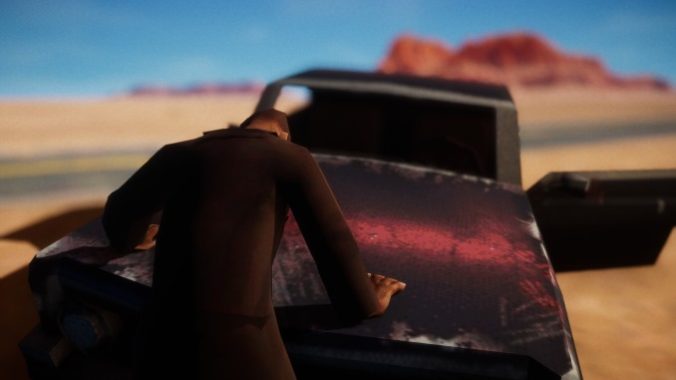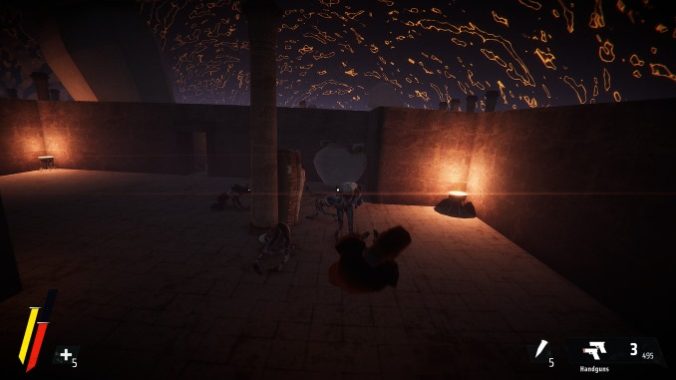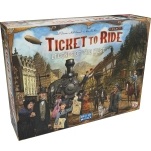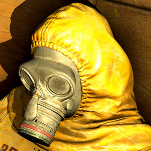El Paso, Elsewhere‘s Love Is Stronger Than Its Fear of Death

James Savage has a problem. He’s taking an elevator straight down into hell, killing all kinds of demonic beasts along the way, with no guarantee of ever returning. That’s not his problem, though, not really; the whole time he’s reliving the damned relationship with the love of his life, a vampire queen bent on destroying Earth and every human on it. The netherworld that Savage descends into is one “elsewhere” of El Paso, Elsewhere, but so are the memories and emotional and psychological scars left by Janet Drake, aka Draculae—the undead woman who stole Savage’s heart and wants to end the world.
All vampire puns aside, love sucks.
El Paso, Elsewhere does something exceedingly difficult: it’s an action-first game that still focuses heavily on its story, and pulls everything off with a consistent level of care and quality. It’s an intentionally “weird” game that doesn’t owe too much to overly referenced cultural touchstones like Twin Peaks or hoary conspiracy theories, and it’s also blatantly indebted to turn-of-the-century gaming without feeling cliched or unoriginal. (Think Max Payne or PS2-era shooters—that’s what El Paso yearns to evoke.) It invites all manner of comparisons and references, and yet defies almost all of them across its 50 chapters. It stirs a lot of echoes, yet makes a sound that’s entirely and unmistakably its own. It does the job and does it well, with the kind of cohesion you rarely see in games: an expertly calibrated suite of mechanics that interconnect flawlessly, combined with a smart, well-written story and an intricately interwoven soundtrack. I know there are a couple of months left, but I feel pretty safe saying this thing is going to come in near the top of our year-end lists.
Although the level of craftsmanship on display is high across the board, the best decision Strange Scaffold made was dividing the game up into relatively short units. 50 chapters might sound like a ton, but most of them take maybe 10 minutes to complete, even for weirdo completionists like me who have to comb over every part of a level before moving on. (This game is going to be total catnip to speedrunners.) It makes El Paso, Elsewhere a perfect game to pick up and play when you have a few minutes of downtime (especially if you’re playing on PC, and can crank out a quick level on a work break), but also makes it really hard to quit playing, since you know the next level won’t take too long to complete. Even with its relative brevity, it’s easy to lose yourself in this game and keep plunging deeper and deeper into damnation, no matter how little time you planned on spending in it.

“Typical” isn’t really a word that should be used to describe El Paso, Elsewhere, but chapters do have some basic commonalities. The camera rests behind James as you guide him through a variety of impossible spaces; at first it’s a series of motel rooms and hallways that ultimately lead nowhere or twist back onto themselves, and later on those soulless motel spaces combine with graveyards, castles, and other haunts vampires are known for. James packs a small arsenal of firearms—a shotgun, a Tommy gun straight out of an old mob movie, two pistols wielded as coolly and post-Matrix-y (sorry, John Woo-ly) as possible, and more—along with a handful of stakes as he slaughters his way through these unearthly environments, while also rescuing the few kidnapped innocents who haven’t been sacrificed yet. Each gun has a weight to it, not physically but in terms of time; they fire at distinct rates, and have to be reloaded manually, with each weapon having a different reload time. You’ll quickly internalize how much time is needed to fire and reload these guns, and will regularly hop between them when the action is at its most frantic; the tension that creates, along with that dance between James’ movements and cycling through his weapons, gives El Paso a distinct and compelling rhythm regularly emphasized by the game’s original songs.
-

-

-

-

-

-

-

-

-

-

-

-

-

-

-

-

-

-

-

-

-

-

-

-

-

-

-

-

-

-

-

-

-

-

-

-

-

-

-

-









































